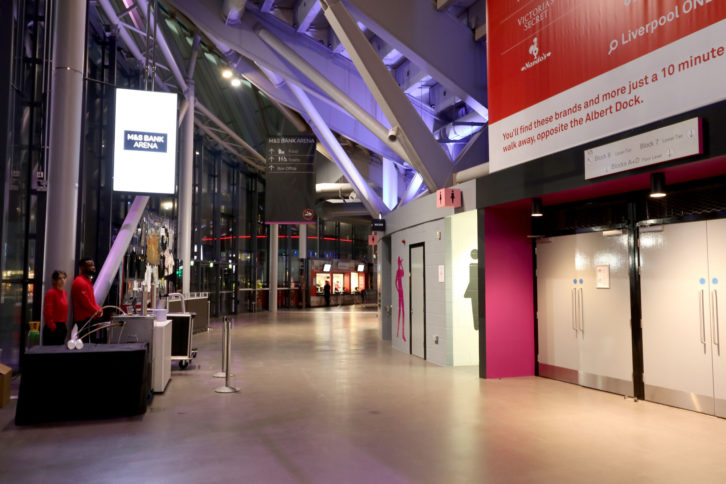
In the first part of this budgets feature, we looked at the disparity between the different markets and how many integrators generally compete for tenders. Here Ian McMurray considers the added value integrators offer that can go unnoticed and hears how clients often have unrealistic price expectations.
Do prospective clients often ask for a price reduction? The answer varies from “yes, this happens quite regularly” to “occasionally, we are asked to take a look at pricing”. No-one replies “never”…
“We are often asked to lower hardware prices on items where they are available cheaper using online drop-shippers holding gold or platinum level supplier discount,” says Spiros Andreou, service delivery manager at CDEC. “Our approach to this is to explain to the customer that the higher price they are paying includes handling, inspecting and testing equipment, storage and staging in our warehouses and collection of its asset details while off-site. This is part of the ‘hidden’ value and reduced risk of working with an integrator as opposed to a customer ordering equipment themselves and paying someone to install it.”
In other words: always ensure that the prospect is comparing apples with apples (a classic way of handling a price objection) – and sell the added value that drives the higher price. The industry regularly sees integrators who have fallen by the wayside because of their inability to make appropriate levels of profit.
“Yes, this absolutely happens,” confirms John Masters, who is director, global enterprise framework at AVMI. “Integrators also regularly go out of business because of the payment terms they have agreed to or because of late payment.”
“There are a number of integrators who do not have a long-term strategy for their business or the industry,” adds Colin Etchells, group technical director at Saville Group. “By trying to grow their businesses quickly they risk their long-term future. The university sector is a classic example; as margins have crashed companies have either decided to retract from that sector or gone bust. Other companies are so strapped for margin they have to rely on underqualified subcontract labour to install projects. Quality and service suffers as a result, damaging the AV integrator’s profile, the client’s business and ultimately the industry further.”
“I do think,” he continues, “that there is also a naivety around how much is involved in designing and putting a successful bid together. In the UK, the role of the AV Integrator isn’t regarded as a highly skilled profession – and certainly, our colleagues in the US enjoy a much higher profile and respect.”
Impact on margins
All of which begs the question: what to do when the prospect says “Your price is too high”? Reducing it is seldom an option, given the consequent impact on margins. Job one is to bottom out whether a prospect’s price expectations are realistic.
“Invariably, no, the budget isn’t realistic and more often than not things have not been thought through or considered,” believes Etchells. “This can be as a result of clients really not being aware of what is achievable and a lack of long-term planning. Few consider future-proofing and have relatively short-term plans. The technology changes so quickly that strategies haven’t been developed to keep pace with these advances. If we then factor in that AV is usually at the end of the line after a refit or new build, it’s no surprise that the project budget is compromised and that it is virtually impossible to find additional funds.”
Those aren’t the only reasons, as Mark Childerhouse, sales director at Pioneer Group, points out. “It can be that new customers don’t have realistic budgets, as they are looking for complicated interactive experiences that require a lot of infrastructure or software development, which may appear to look simple from the user’s perspective,” he says. “Professional displays are more expensive than consumer displays, but end users often compare the costs on the basis of what they see in the shops. And it can often be that ongoing licensing costs and ongoing maintenance are overlooked.”
An industry staple, when trying to meet a client’s price expectations or to submit a more competitive bid is to turn to suppliers for support in terms of a reduced buy-in price.
“We work very closely with manufacturers,” says Childerhouse. “The more you engage with them and involve them in the early conversations of a project, the more you can work together to provide the best pricing and experience for the end user.”
Strong relationships
“We have worked very hard to develop strong relationships with our supply chain and constantly share information regarding projects,” echoes Etchells. “As a result, we are in a position to be able to secure discounted pricing where available for a project – which obviously makes it more economic for the client.”
But supposing that, for whatever reason, that manufacturer support wasn’t forthcoming? Is it ever the case that integrators would accept a lower-than-model margin?
“We value a long-term partnership with our customers, and approach each case on its own merits,” says Andreou. “Although the objectives of any business are to be profitable, a customer utilising newer technology, providing a good case study or word-of-mouth recommendation to sector peers, or evaluating suppliers for potential longer term relationship definitely has value – and that may influence the business’ strategy towards a new client.”
Childerhouse has a similar approach. “We wouldn’t necessarily walk away from an opportunity,” he asserts. “If there is a long-term relationship, additional projects in the pipeline or maybe a marketing opportunity which makes it worthwhile working at a lower than usual margin, it’s something we would still consider.”
Etchells is equally pragmatic. “It depends,” he says, “on the opportunity and what the longer term prospects are, and whether the client is a company, institution or body we have a strong relationship with.”
www.avmi.com
www.cdec.co.uk
www.pioneergroup.co.uk
www.visavvi.com






